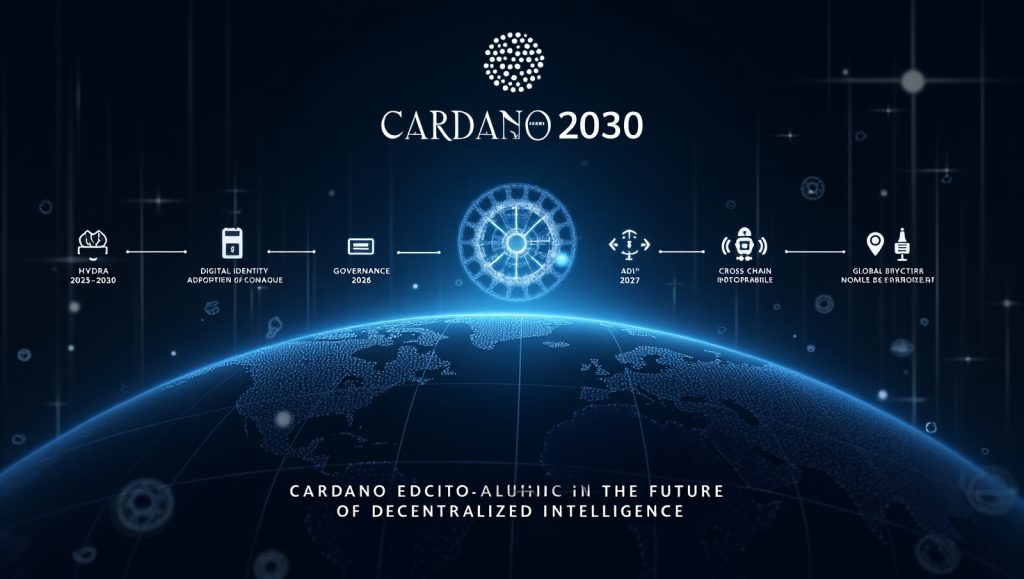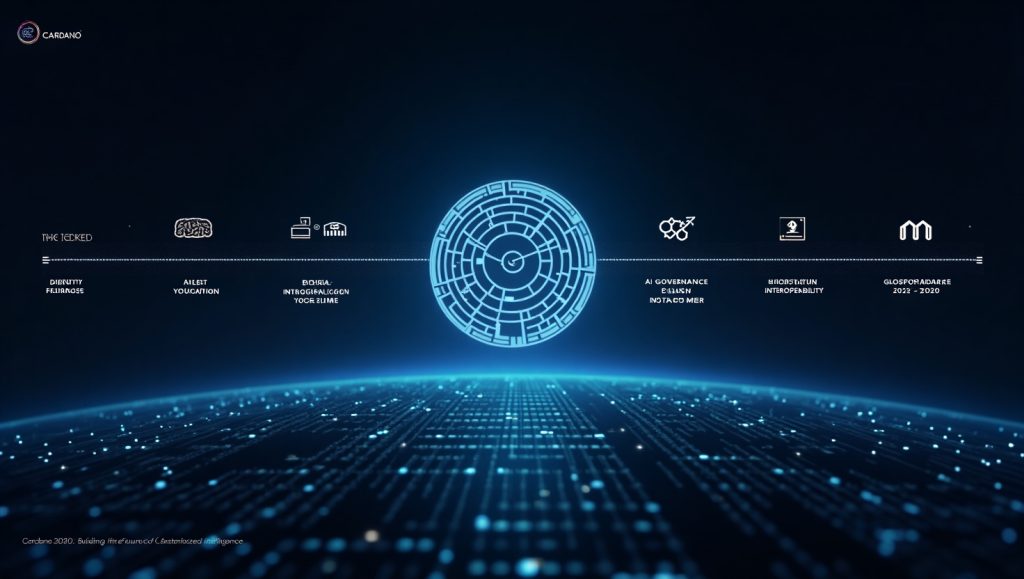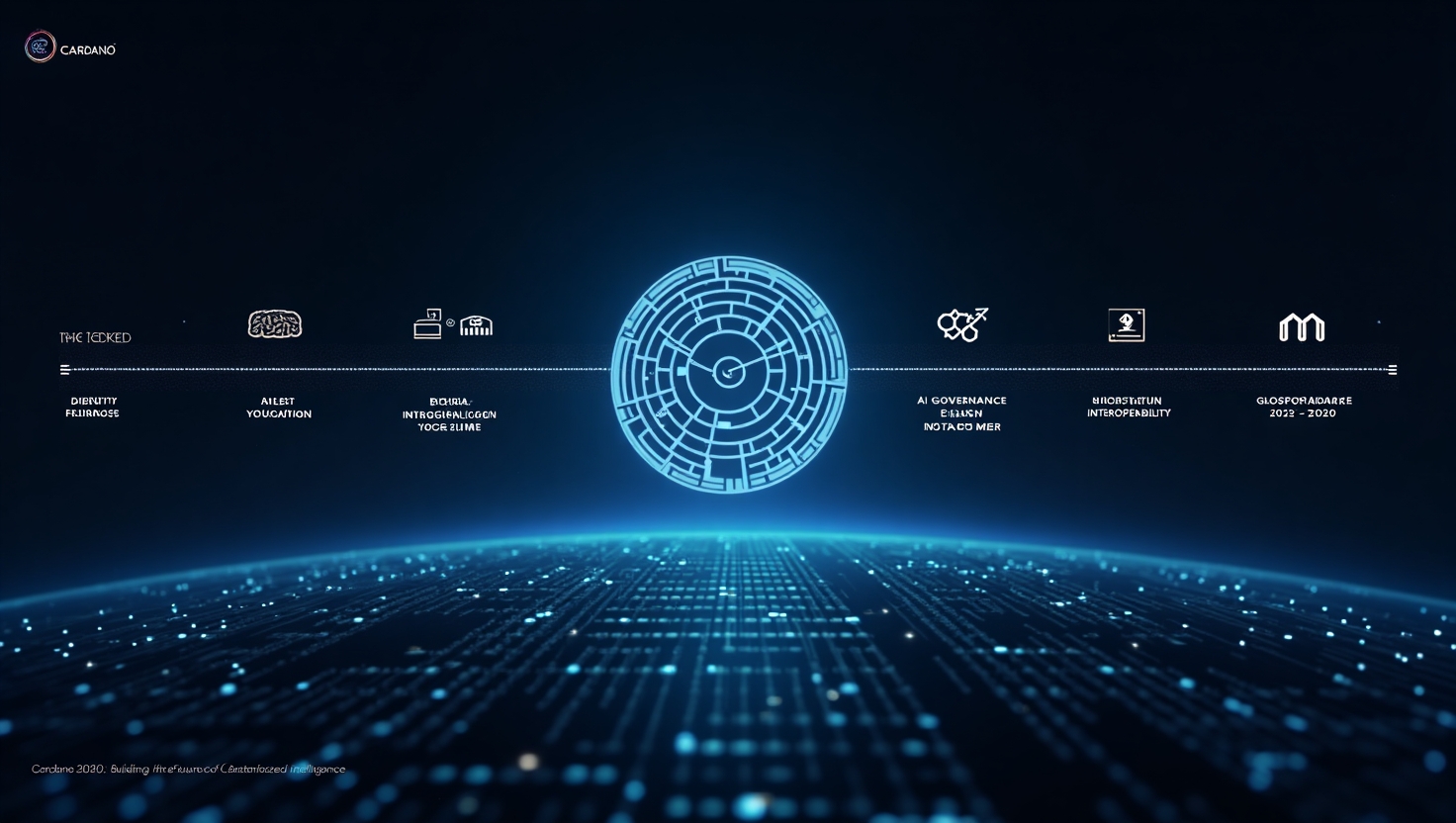Introduction: What is Cardano?
Cardano is a third-generation blockchain platform known for its scientific approach to scalability, sustainability, and interoperability. Launched in 2017 by Charles Hoskinson, one of Ethereum’s co-founders, Cardano seeks to overcome the limitations of earlier blockchains like Bitcoin and Ethereum.
It is built on peer-reviewed academic research and designed to run smart contracts, decentralized applications (dApps), and support DeFi ecosystems using its native token, ADA.

Why Cardano Stands Out in the Blockchain Space
Cardano’s mission is to provide a balanced and sustainable ecosystem for cryptocurrencies. Here’s why it’s unique:
- Scientific Methodology: Uses peer-reviewed academic research as the foundation for development.
- Energy-Efficient Proof of Stake (PoS): Consumes significantly less energy than Bitcoin or Ethereum.
- Layered Architecture: Separation of settlement and computation layers increases flexibility.
- Governance by the Community: Decentralized voting system allows ADA holders to influence protocol development.
Key Milestones in Cardano’s Development
| Year | Milestone | Description |
|---|---|---|
| 2017 | Byron Era | Cardano launched; ADA token released |
| 2018 | Shelley Testnet | Began decentralization; introduced staking |
| 2020 | Shelley Mainnet | Fully decentralized network with stake pools |
| 2021 | Goguen Era | Enabled smart contracts |
| 2022 | Basho Era | Scalability improvements and sidechain development |
| 2023 | Voltaire Era | On-chain governance and treasury system introduced |
Cardano Architecture Overview
Cardano operates on a two-layer system:
- Cardano Settlement Layer (CSL)
- Handles ADA transactions
- Ensures speed and security
- Cardano Computation Layer (CCL)
- Runs smart contracts and dApps
- Enables customizable protocols and regulatory compliance
This modular design allows Cardano to be flexible, scalable, and interoperable with other systems.
Cardano’s Native Token: ADA
What is ADA?
ADA is the native cryptocurrency of the Cardano network, named after Ada Lovelace, the 19th-century mathematician considered the first computer programmer.
Use Cases of ADA:
- Transaction Fees: Used to pay for on-chain transactions
- Staking: ADA holders can earn passive income through staking pools
- Governance: Token holders vote on protocol upgrades
- Collateral: Utilized in DeFi and lending protocols
Cardano vs. Other Major Cryptocurrencies
| Feature | Cardano (ADA) | Ethereum (ETH) | Bitcoin (BTC) |
|---|---|---|---|
| Consensus Mechanism | Proof of Stake (Ouroboros) | Proof of Stake (Casper) | Proof of Work |
| Smart Contracts | Yes | Yes | Limited |
| Energy Efficiency | High | Moderate | Low |
| Transaction Speed | ~250 TPS | ~30 TPS (pre-rollups) | ~7 TPS |
| Governance | On-chain Voting | Limited | Minimal |
| Supply Cap | 45 Billion ADA | No Cap | 21 Million BTC |

Real-World Applications of Cardano
- Finance (DeFi)
- Lending, borrowing, and yield farming via smart contracts
- Projects like SundaeSwap and Minswap are built on Cardano
- Education and Credentialing
- Partnership with Ethiopia’s government to issue digital IDs and records for students
- Healthcare
- Verifiable medical data and traceability via blockchain
- Supply Chain Management
- Track and verify the origin and movement of goods
- Identity Management
- Digital identity platform, Atala PRISM, is being used for government and business applications
Benefits of Investing in Cardano
- Energy Efficiency: Uses PoS protocol “Ouroboros,” requiring minimal power.
- Scalability: Hydra and other sidechain technologies aim to increase throughput.
- Strong Community and Governance: Supported by the Cardano Foundation, IOHK (Input Output), and Emurgo.
- Transparency: Regularly updated research and development logs.
- Interoperability: Works on bridging Cardano to Ethereum and other chains.
ADA Price Trends and Market Performance
| Date | Price (USD) | Market Cap | Key Event |
|---|---|---|---|
| Jan 2020 | $0.03 | $1 Billion | Pre-smart contract phase |
| Sep 2021 | $3.10 (ATH) | $90 Billion | Smart contract rollout (Goguen) |
| Mid 2022 | ~$0.45 | ~$15 Billion | Bear market correction |
| Mid 2024 | ~$0.40–$0.45 | ~$13 Billion | Ecosystem expansion in DeFi |
Note: Prices are subject to change. Check live markets for updated data.

🔮 Future of Cardano (ADA): 2025–2030 Forecast
Cardano is positioned as one of the most academically rigorous and environmentally sustainable blockchain projects. Its slow but steady roadmap and scientific foundation suggest a long-term vision rather than short-term hype.
📈 2025: Layer 2 Scaling & Commercial Use
- Hydra (Layer 2) expected to go live at scale, enabling up to 1 million transactions per second (TPS).
- DeFi protocols like Minswap, SundaeSwap, and Liqwid may see large user base growth.
- Cardano becomes more attractive for enterprise and government blockchain adoption.
- ADA price forecast: $1.50 – $2.50 (depending on broader market trends).
🌍 2026: Identity & Digital Government Expansion
- Atala PRISM gains traction in Africa and Southeast Asia for digital ID, voting systems, and academic credentialing.
- Partnerships with NGOs and educational institutions further solidify Cardano’s real-world utility.
- ADA staking becomes more mainstream as a passive income tool.
- ADA price forecast: $2.50 – $4.00
🤖 2027: AI Integration & Smart Governance
- Integration of AI-driven governance tools into the Voltaire era (Cardano’s self-governance framework).
- Massive adoption of Decentralized Identity (DID) and Zero-Knowledge Proofs (ZKPs) for private data sharing.
- More governments, especially in emerging economies, test Cardano for national services.
- ADA price forecast: $3.80 – $6.00
🔗 2028: Full Interoperability Era
- Successful bridge integration between Cardano and Ethereum, Polkadot, and other EVM-compatible chains.
- Developers migrate due to lower gas fees, predictable governance, and cleaner on-chain development.
- Cardano becomes a top-three platform for institutional-grade smart contracts.
- ADA price forecast: $5.50 – $8.50
🌐 2029–2030: Mainstream Recognition
- ADA may be used in national payment systems, carbon credit markets, and public blockchain governance.
- Cardano becomes synonymous with ESG investing, attracting trillions in institutional capital.
- If global crypto adoption reaches 1–2 billion users, Cardano could be a core infrastructure layer.
- ADA price forecast: $8.00 – $15.00 (under bullish macro and adoption scenarios)
⚠️ Key Factors That Could Influence Cardano’s Future
🚀 Catalysts
- Successful scaling via Hydra
- Broad use of Atala PRISM
- Government adoption
- Increased DApp ecosystem development
🧱 Risks
- Slow development pace
- Regulatory actions targeting ADA
- Competitors like Ethereum 2.0, Solana, or Avalanche gaining speed
- Lack of dApp user traction
How to Buy and Store ADA
Top Exchanges for Buying ADA
- Coinbase
- Binance
- Kraken
- KuCoin
- eToro
Recommended Wallets for Cardano
| Wallet | Type | Security Rating | Staking Support |
|---|---|---|---|
| Daedalus | Desktop | ★★★★★ | Yes |
| Yoroi | Browser/Mobile | ★★★★☆ | Yes |
| Ledger Nano X | Hardware | ★★★★★ | Yes |
| Trezor | Hardware | ★★★★☆ | No (yet) |
How Cardano Supports Sustainable Crypto Development
Cardano is focused on creating a green blockchain. With Ouroboros PoS, Cardano drastically reduces energy consumption compared to Bitcoin or Ethereum (PoW). It aligns with environmental, social, and governance (ESG) investment principles, making it appealing to institutional investors looking for sustainable assets.
Conclusion: Why Cardano Matters
Cardano represents the next generation of blockchain innovation, balancing technology, sustainability, and community-driven governance. Whether you’re an investor, developer, or policy maker, understanding Cardano provides insight into the future of secure, scalable, and environmentally conscious cryptocurrencies.
With ongoing advancements in smart contracts, scalability (Hydra), and global adoption, Cardano is poised to play a critical role in the evolution of the decentralized web (Web3).
